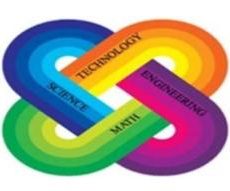A mysterious “dent” in Earth’s magnetic field could pose a new threat to satellites and even future space missions, NASA has warned, as the anomaly expands and shifts. Although known to scientists for years now, the South Atlantic Anomaly, or SAA, has more recently been displaying unexpected changes.
Earth’s magnetic field is primarily shaped by its north and south poles. They represent opposing magnetic polarities, and so a field of invisible lines run between them, encircling the planet like a cage.
The movement of molten metals in the outer core has an impact on that invisible field. ” These churning metals act as a massive generator, called the geodynamo, creating electric currents that produce the magnetic field,” NASA explains. “As the core motion changes over time, due to complex geodynamic conditions within the core and at the boundary with the solid mantle up above, the magnetic field fluctuates in space and time too.”
One impact of this fluctuation is the gradual drift of the magnetic poles themselves. Much less known, though, is the SAA (aka the Dent). There, the weaker forces in the field allow charged particles from the Sun to come closer to the surface. Indeed, they can be powerful enough to interfere with the computers and sensors aboard satellites that pass through that region.
“Currently, the SAA creates no visible impacts on daily life on the surface,” NASA points out. “However, recent observations and forecasts show that the region is expanding westward and continuing to weaken in intensity. It is also splitting – recent data shows the anomaly’s valley, or region of minimum field strength, has split into two lobes, creating additional challenges for satellite missions.”
Typically, satellite operators will turn off non-essential components as the orbiting hardware pass through the SAA region. That way, temporary or even permanent damage can be avoided. In order to do that, though, the position and spread of the SAA needs to be constantly mapped.
During that mapping, NASA heliophysicist Ashley Greeley identified that the SAA is actually on the move. The region is shifting northwesterly, as the geomagnetic fields that help create it also shift. Now, like weather forecasters track patterns in the planet’s forces, NASA’s Planetary Geodynamics Laboratory at Goddard Space Flight Center are looking at longer-term forecasts of how the SAA might change in the coming years.

As well as enabling better, more stable satellite design – and, beyond that, designs for future spacecraft intended to go to the Moon, Mars, and beyond – the tracking also has implications for our knowledge of Earth itself. The planet’s magnetic fields have a significant impact on many areas of life, not least Earth’s ability to withstand powerful storms of energized particles from the Sun that would otherwise be disruptive to systems on the ground.


